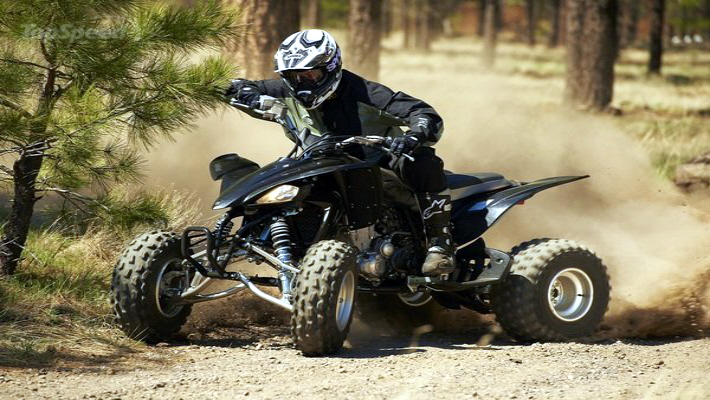Ask the Editors: Help Me Decide On My Trail Quad
Let’s try and break your question down into pieces. For starters the Yamaha YFZ450R and Honda TRX450R are the epitome of sport-performance but they are fairly restricted in what they can do on trails. If you ride hard pack, flowing double-track, fire roads or MX/ XC-style courses, either of these modern 450s will fit the bill perfectly. But because they boast manual clutch transmissions, rear-drive only and low ground clearance, they aren’t your best choice for super technical terrain, rock climbing, mud-riding and so on. Here you are going to want to look into machines with CVT transmissions, multiple drive wheels and all the ground clearance you can afford.
This leads us to the second part of your question- yes a few companies make sport performance 4×4 quads designed for the conditions described. We would steer you toward Can-Am in this arena. Machines like their Renegade (and to a lesser extent Outlander) are designed to offer loads of speed and power with the benefits of an automatic transmission, 4-wheel-drive package.

Reliability these days is really a non-factor. Any machine that has been cared for and properly maintained will provide you with years of trouble-free performance. We typically advise against going with off-brand/ generic ATVs on account of the fact that they lack dealership networks, dedicated parts resources and quality control at their factories. Otherwise Yamaha, Honda, Suzuki, Kawasaki, Polaris, BRP (Can-Am), Arctic-Cat, KTM, Kymco and Hyosung all offer excellent products known for reliability and dealer support.
Lastly keep in mind that contrary to popular misconception, fuel injected engines do not make more power than carbureted ones. The difference between the two is a matter of proper set-up for conditions. Fuel injection allows fuel maps to switch on the fly based on the readings of a variety of onboard sensors. In other words if it’s cold in the morning, the fuel injection system can compensate. Ride into elevation? Fuel injection can compensate. There is no need to change out brass jets to alter the fuel/ air ratios like with a carb. However, some riders prefer the relative simplicity and mechanical nature of a carburetor over the electronically controlled injector system- which usually demands a battery to operate the fuel pump and involves said electronic sensors like those found on a car. Additionally changing the fuel delivery ratios on a fuel injected model typically requires a costly fuel control module and a laptop rather than a handful of affordable brass jets.

Is there a clear winner then? In this case, no. When properly set up, it is nearly impossible to find a discernible difference between the two methods of fuel delivery. Most likely which you will end up with will depend heavily upon the year of the model you decide to purchase as fewer and fewer ATVs being produced rely upon carburetion each year due to fuel injection’s ability to better control emissions.


